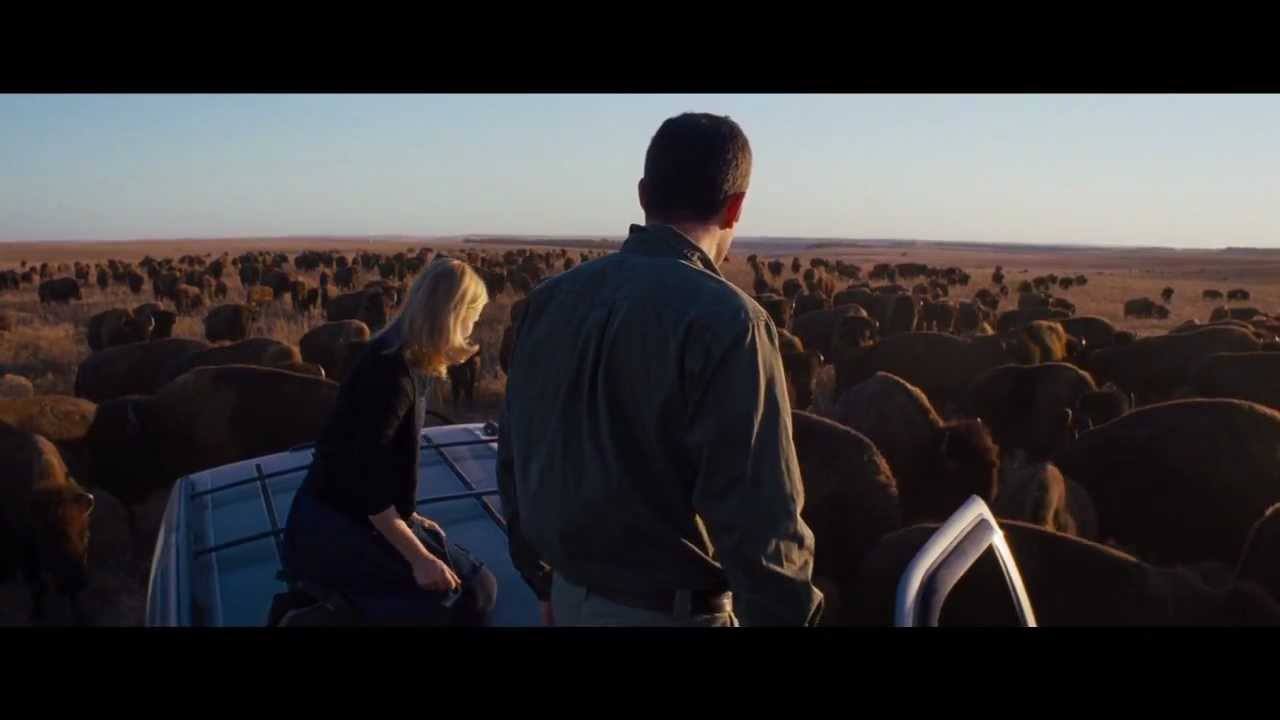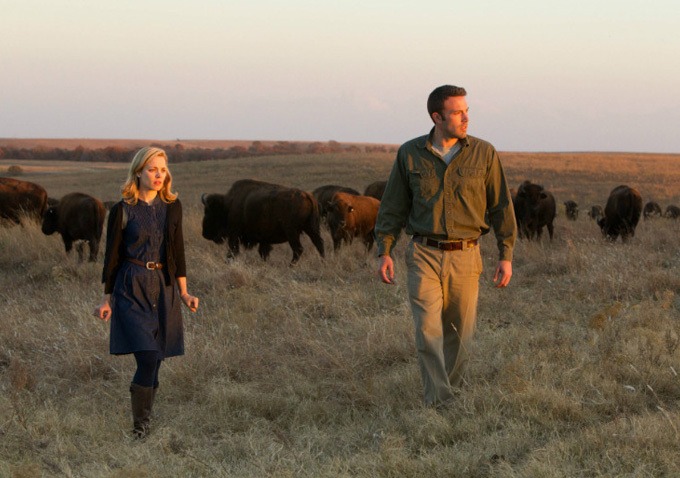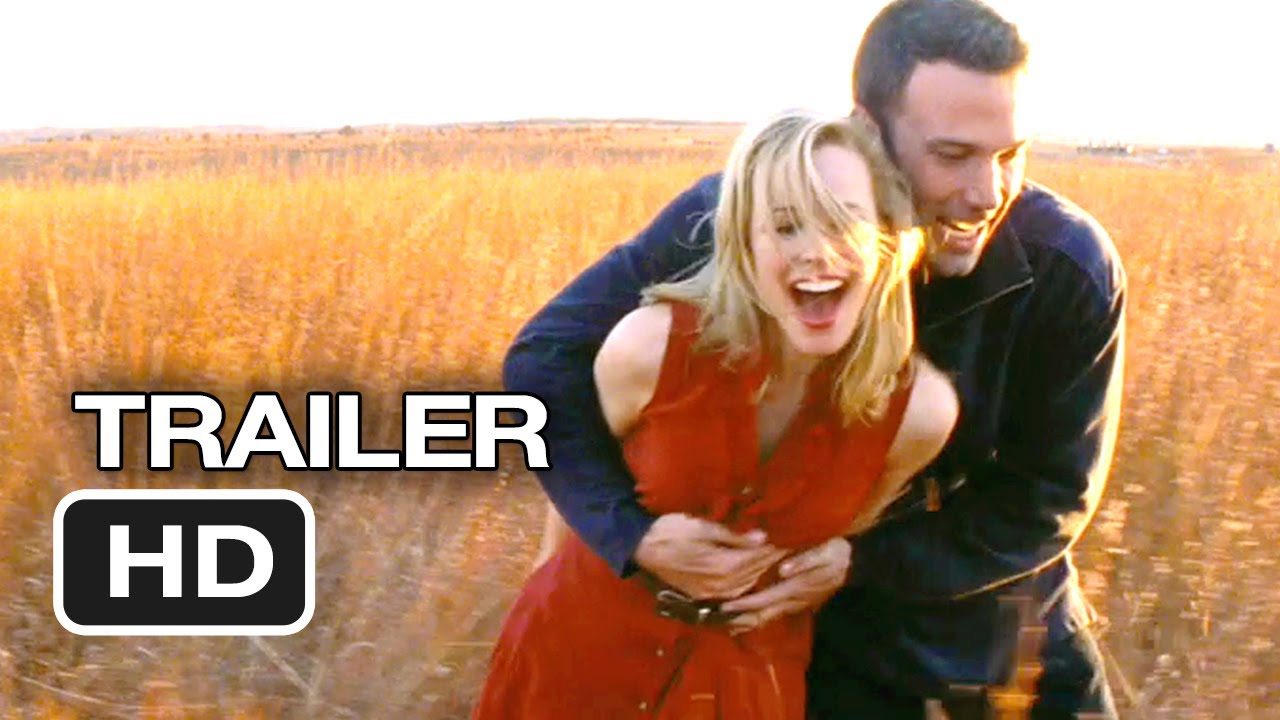To the Wonder (2012)

To the Wonder (2012), directed and written by Terrence Malick, is a contemplative, poetic meditation on love, faith, and the complexities of human relationships. Known for his deeply philosophical approach to filmmaking, Malick explores the inner emotional landscapes of his characters in a way that is both intimate and expansive, blending visual beauty with existential reflection. The film stars Ben Affleck, Olga Kurylenko, Rachel McAdams, and Javier Bardem, each of whom contributes to a narrative that is as much about personal growth and spiritual questioning as it is about romantic entanglements. With To the Wonder, Malick continues his signature cinematic style, characterized by a focus on nature, minimal dialogue, and an ethereal, almost meditative quality to the storytelling.
To the Wonder follows the relationship between Neil (Ben Affleck) and Marina (Olga Kurylenko), who meet in Paris and fall deeply in love. Marina, a French woman, moves to the United States with her young daughter, Tatiana, to live with Neil in Oklahoma. As their love blooms, so does the disillusionment that inevitably follows the initial phase of infatuation. The film portrays the slow unraveling of their connection, as both characters struggle with the realities of living together and confronting the emotional and spiritual challenges that arise in their relationship.
Marina and Neil’s relationship begins to deteriorate due to emotional distance, which is further complicated by their personal insecurities and unmet desires. While Neil remains emotionally withdrawn and uncertain about his feelings, Marina’s longing for connection and purpose becomes more pronounced. The film takes a nonlinear approach to storytelling, weaving in flashbacks, introspective moments, and disconnected visual motifs that allow the audience to feel the emotional turbulence of the characters rather than follow a traditional narrative structure.
Parallel to Neil and Marina’s troubled relationship, the film also introduces Father Quintana (Javier Bardem), a Catholic priest in Oklahoma who struggles with his own crisis of faith. Father Quintana is shown grappling with the spiritual emptiness of his life and his inability to connect with his parishioners. The juxtaposition of Neil and Marina’s relationship and Father Quintana’s search for meaning creates a thematic link between the longing for love, connection, and transcendence that defines the film.
As the story progresses, Neil becomes more emotionally detached from Marina, and the relationship ultimately dissolves. Marina, feeling abandoned, returns to France, and Neil is left alone to reflect on the impermanence of love and the existential questions that haunt him. In the final moments of the film, there is a sense of quiet resolution as the characters continue on their individual paths, leaving the audience to reflect on the impermanence of love, the fragility of human connection, and the search for meaning in a chaotic world.
At its core, To the Wonder is a meditation on the nature of love—its beauty, its fragility, and its capacity to both elevate and disappoint. Malick explores the emotional landscape of love through the lens of his characters’ experiences. Neil and Marina’s relationship starts with an intense passion, but as time passes, it loses its vitality and becomes strained by the weight of emotional distance, unspoken desires, and existential confusion.
The film portrays love as both transcendent and fleeting, a force that can elevate individuals but also leave them vulnerable and searching for meaning. Malick does not offer easy answers about love; instead, he invites the viewer to experience the profound ambiguity that love brings. The disintegration of Neil and Marina’s relationship serves as a poignant reminder of the impermanence of romantic connections, with Malick capturing the quiet despair and yearning that often accompany love’s dissolution.
This theme is reflected in the natural world, which serves as a constant backdrop to the characters’ internal struggles. The lush, expansive landscapes of Oklahoma and the intimate close-ups of trees, water, and sky evoke the cyclical nature of life and the fleeting beauty of human connection. Just as the seasons change and the natural world experiences cycles of growth and decay, so too do human relationships.
Another central theme in To the Wonder is the search for spiritual meaning and fulfillment. This theme is explored through the character of Father Quintana, who represents the spiritual void that many of the characters are grappling with. Although he is a man of the cloth, Father Quintana struggles with his faith and is unable to find a connection to God or his parishioners. His spiritual crisis parallels Neil and Marina’s emotional struggles, as both are searching for something beyond the confines of their relationships.
Father Quintana’s journey is one of spiritual desolation, as he experiences a profound sense of emptiness and disillusionment. His role in the film emphasizes the idea that faith, like love, can be fleeting and difficult to grasp. Malick suggests that the search for meaning—whether through love, religion, or human connection—can be a lifelong pursuit, and that this pursuit is often filled with doubt and uncertainty.
The idea of spiritual yearning is further explored through the film’s visual style. Malick frequently uses shots of nature—vast skies, flowing rivers, and expansive fields—to suggest a connection between the natural world and the transcendent. These moments of visual poetry create an atmosphere of spiritual longing, allowing the viewer to feel the characters’ inner emotional turmoil and search for meaning. The quiet beauty of the natural world in the film contrasts with the chaos and confusion that the characters experience in their personal lives, suggesting that there is a deeper, more enduring force at play that transcends human understanding.
To the Wonder also delves into the complexities of human relationships, both romantic and familial. The film’s portrayal of Neil and Marina’s relationship is far from idealized. It shows how love, even at its most passionate, can be complicated by emotional distance, misunderstandings, and the inherent contradictions in human nature. Neil’s emotional withdrawal from Marina is emblematic of the difficulty in maintaining intimacy, especially when one is uncertain about their own feelings.
The dynamic between Neil and Marina is contrasted with the relationship between Marina and her daughter, Tatiana, which, while more grounded in love and care, also reflects the challenges of connection. Marina’s desire for emotional fulfillment and her struggle to find stability in her relationships are mirrored in her maternal connection to Tatiana, showing that the search for meaning and connection spans beyond romantic love and into the realm of family and parenthood.
Malick’s exploration of these relationships is marked by a distinct sense of quiet intimacy, with the camera often lingering on small, seemingly insignificant moments—glances, gestures, and touches—that speak volumes about the emotional subtext between the characters. These moments highlight the delicate nature of human connection and the constant need for communication and understanding in our relationships.

As is typical in Malick’s work, nature plays a crucial role in To the Wonder, functioning not only as a visual motif but also as a reflection of the emotional and spiritual states of the characters. The film’s cinematography, shot by Emmanuel Lubezki, is lush and vibrant, capturing the beauty and depth of the natural world in a way that often feels transcendent. The expansive skies, the vast open fields, and the flowing water are used to symbolize the internal states of the characters—loneliness, longing, and a search for peace.
The frequent use of nature as a backdrop to the human drama suggests that the natural world, in its beauty and transience, offers a kind of solace and clarity that human relationships sometimes fail to provide. There is a constant interplay between the characters’ internal struggles and the vast, impassive forces of nature, highlighting the contrast between the human desire for connection and the indifference of the world around them.

In this sense, nature serves as both a mirror and a refuge, allowing the characters—and by extension, the audience—to reflect on the deeper existential questions that the film poses. The beauty of nature in To the Wonder is not merely aesthetic; it is an emotional and spiritual force that both contrasts with and complements the human search for meaning.
Terrence Malick’s direction in To the Wonder is marked by his signature style—poetic, introspective, and deeply visual. The film eschews traditional dialogue-driven storytelling, instead relying on visual storytelling, natural sounds, and voice-over narration to convey the emotional and spiritual states of the characters. This minimalist approach allows the audience to experience the inner lives of the characters in a more visceral way, as the film often prioritizes sensory experience over plot development.
The film’s use of natural light, sweeping landscapes, and close-up shots of the characters creates a dreamlike atmosphere, blurring the line between reality and the emotional truth of the characters. The camera often lingers on small details—fingers brushing against skin, the sway of trees in the wind, the glint of sunlight through water—capturing the fleeting beauty of the world and the transitory nature of human existence.

The lack of conventional structure in the narrative reflects the film’s thematic exploration of uncertainty and impermanence. There are moments of profound beauty in To the Wonder, but also moments of sadness, emptiness, and longing. This complexity is mirrored in the film’s structure, which resists easy resolution or closure, leaving the audience to ponder the questions that the film raises about love, faith, and the human condition.
To the Wonder (2012) is a deeply meditative film that explores the complexities of love, spirituality, and human connection. Terrence Malick’s signature style—minimalist, poetic, and visually striking—serves as the perfect medium for this exploration, allowing the audience to engage with the characters’ inner emotional











